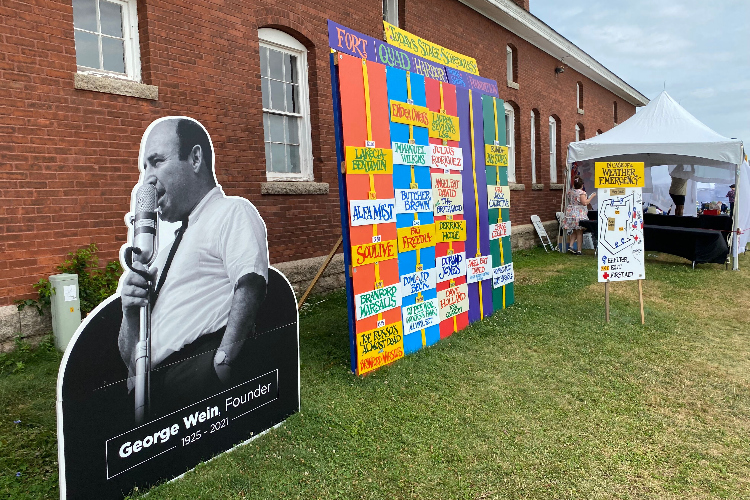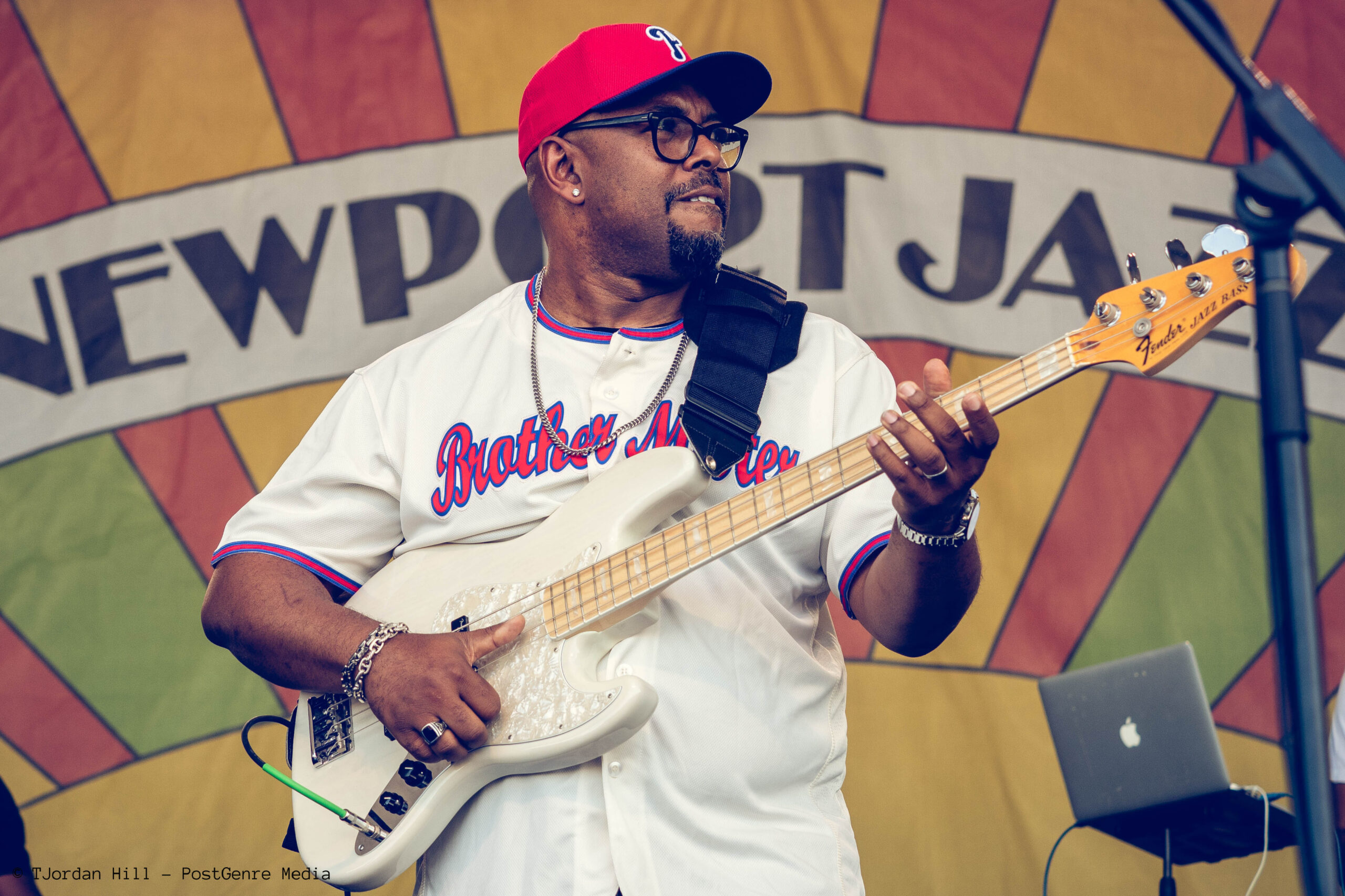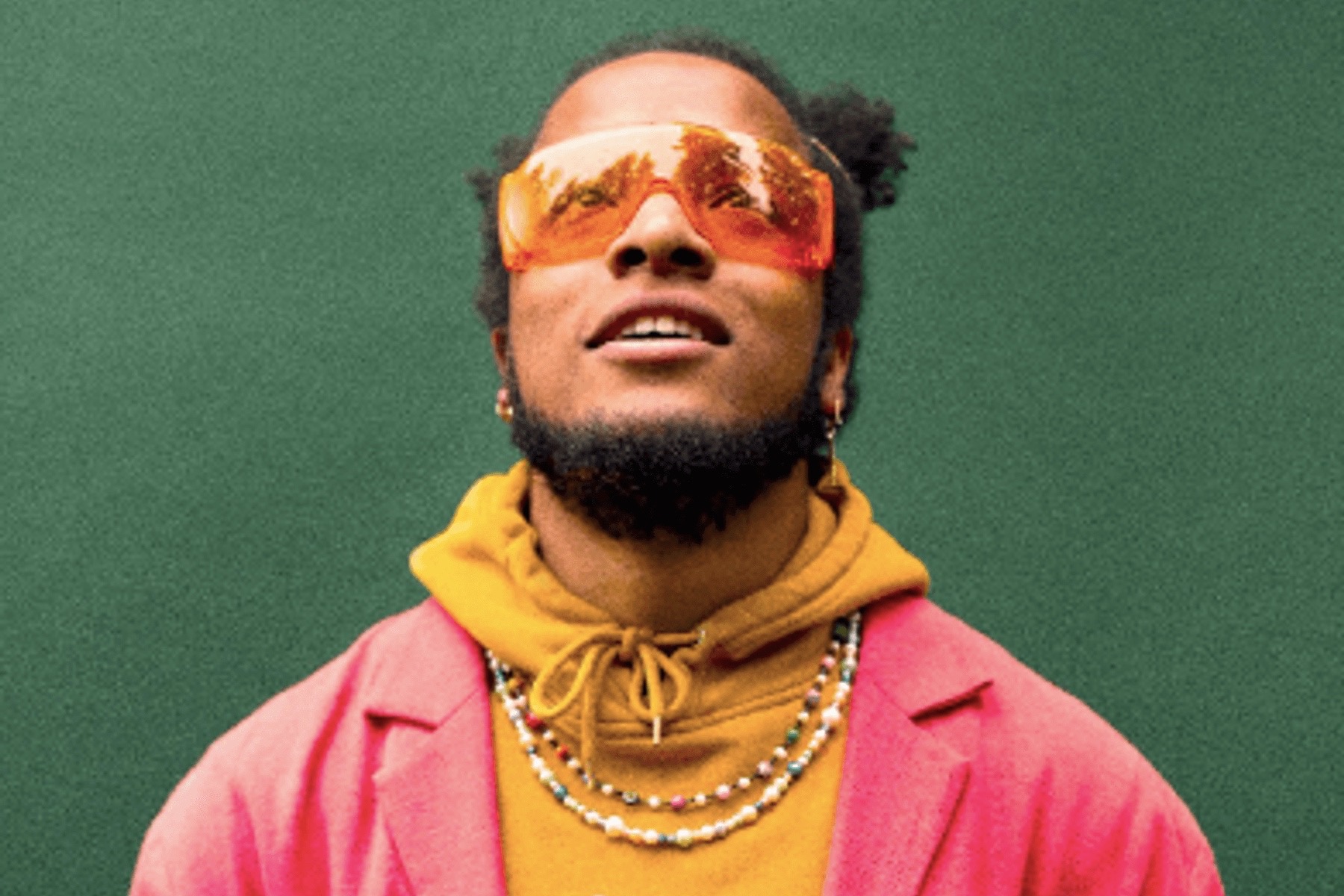Observations from Day One of the 2023 Newport Jazz Festival
|
Getting your Trinity Audio player ready...
|
On Friday, August 4, 2023, the historic Newport Jazz Festival presented a highly pleasurable afternoon of music, as it has for almost seven decades. But across the day, one sensed something more. While audience members enjoyed themselves, a more significant message emerged from Fort Adams’ stages. Intentionally or otherwise, the event’s organizers presented an exposition on existentialism. Even with dancing and clapping, the music left many questions about the meaning of life and the purpose of human existence.
Long before a single note, many were undoubtedly concerned about the environment surrounding the event. In the week leading up to the date, meteorologists continually predicted a day of rain. As time progressed, the sun held out. Weather was unlikely to derail performances regardless; throughout history, some of the Festival’s most remarkable moments occurred in deluges. But the rain’s indeterminacy, even in the face of advanced technology designed to predict it, was a subconscious reminder of the limitations on humanity’s understanding of the broader world around them.

The first performance was bassist-vocalist Endea Owens’ group, The Cookout, with pianist Keith Brown, trumpeter Kris Johnson, alto saxophonist Louis Fouché, and drummer Jerome Jennings. The lively set was an excellent introduction – Owens is about to release her debut record as a leader – to any unfamiliar audience members. The ensemble started with a trio of vocalists – Shenel Johns, J. Hoard, and Ekep Nkwelle- leading a rendition of Stevie Wonders’ “Living for the City” before switching focus to the instrumentalists for the original “Feel Good.” The pinnacle, however, occurred after the bandleader announced they would be performing her “favorite piece,” a rendition of “The Creator Has a Master Plan.” The Cookout’s version featured the vocalists trading gospel-influenced lines and, atop Owens’ rich bass, the chanted mantra “The Power of Love.” It sounded significantly different from Pharaoh Sanders’ magnum opus, despite retaining the might and meaning of the original. Driving even further the metaphysical nature of the piece, Owens concluded it by announcing to the audience that there is something bigger and that performing at Newport was a spiritual moment for them that reached beyond the fleetingness of a live performance.
Over on the Harbor Stage, multi-instrumentalist Julius Rodriguez followed Owens’ lead by beginning with a nod to Stevie Wonder. Then he switched between piano and drums on a series of original tunes from his album Let Sound Tell All (Verve, 2022), which exposed his roots in the Black church. The group also played a heavy metal-infused version of Herbie Hancock’s “Butterfly.” Although not as overtly faith-focused as Owens’ set, the excellent performance’s interspersing of cues from religious music and nods to modern masters reminds of the importance of showing respect and love to those with us here and now.

And then, there was Lakecia Benjamin, the weekend’s Fort Stage opener. In one of the most high-energy sets of the weekend, the saxophonist – joined by pianist Zaccai Curtis, drummer E.J. Strickland, and bassist Ivan Taylor – left the crowd mesmerized. She had an excellent rapport with the audience; Benjamin has an incredible stage presence. But one often felt she was playing for a higher audience. Clad in gold, she twisted and contorted her body as she played pieces off of Phoenix (Whirlwind, 2023) dedicated to the great, criminally underrated female musicians that created before her.
The set reached a new level, however, when Benjamin practically summoned the spirit of John Coltrane to breathe fire through her horn. Given its somewhat impromptu nature, her rendition of “My Favorite Things” could have found the bandleader playing it safe. But like Trane, she refused to dampen her voice. At times her alto solo went wild, in tandem with the drums, invoking music from Interstellar Space (Impulse!, 1974). But she also quoted “Wade in the Water,” connecting even avant-garde experimentalism to gospel roots.
Benjamin also ensured people knew the earthly ties to Coltrane’s work. She prefaced her performance of “Alabama” by noting that she was playing it because “the world has a long way to go since 1967” and “hopefully, by 2050, my kids won’t need to play the song.” Aware of the piece’s origins, as a response to the Birmingham church bombing, Benjamin’s solo mimicked sirens, reflecting ambulances rushing to the scene where hatred caused so much pain and suffering. The group then immediately switched to an incredibly up-tempo rendition of “Acknowledgement” from Coltrane’s masterwork dedicated to God, A Love Supreme (Impulse!, 1965). The audience began chanting “A Love Supreme” with the group, and the message from the stage was clear. As troubling as things can be here, this life is not forever. There is something bigger and a place beyond hate and pain.

Following Benjamin on the Fort Stage was British pianist Alfa Mist. The lo-fi jazz master presented original compositions, complete with electronic distortions and echo effects. But even amid the thoroughly modern set, there was a fairly conventional rendition of Freddie Hubbard’s “First Light” led by JSphynx/Johnny Woodham on flugelhorn. Perhaps the band chose to play this cover solely out of a love of the trumpeter’s CTI works. But the selection as the group’s lone cover during a day so spiritually focused sent a message that questions the narrative of a higher power; perhaps people leave behind solely their memory and a path for their descendants to follow. The title of the immediately succeeding piece, a gentle one titled “Grief”, albeit about the loss of love, seemingly further underscored this perspective.
At the Harbor Stage, Derrick Hodge brought the audience back to church. Presenting music from the deeply personal Color of Noize (Blue Note, 2020), Hodge provided soulful music that, while merging jazz and R&B, also evoked the influence of his first inspiration on the strings: church bassist Joel Ruffin. His lyrically beautiful low tones melded wonderfully with the lines created on the organ by Jahari Stampley. Between songs, Hodge spoke on the virtue of gratitude, specifically his thankfulness for performing at the Festival. Staying true to the day’s theme, the leader even sang lyrics noting angels watching over him.

Strangely, the mention of such celestial beings segues perfectly into the next performance. In an intimate, sparsely attended workshop at the Museum Stage, Angel Bat Dawid presented one of the most indelible hours of the entire weekend. Filmed as an educational experience for schools, Dawid’s “Hush Harbor Mixtape Service” was designed to teach core concepts of Great Black Music. The group explained concepts like polyrhythms and call and response, but it also did much more.
Inspired by the hush harbor, a place where enslaved African Americans would secretly gather to practice religious traditions, the event began with the group speaking of the need to experience Black Music, pay attention to the moon and the stars, and communicate with ancestors in a society that opposes such transmissions. The band then went outside to burn incense, lay hands on each other, and chant atop intense drums. As the group entered the room, Dawid expressed such sentiments as that she would “never die” and that there “things seen and unseen exist[].”
She then passed out hand percussion instruments – maracas and tambourines- to the audience to allow them to be more integrated into the experience, along with instructions to chant and sing with the group. In addition to Dawid’s performances on clarinet and recorder, she also played piano and stomped rhythms for the rest of the group to match. The rest of the band also doubled on many instruments.
The workshop was not solely a traditional hush harbor service. The title also explicitly referenced its Afro-futurist nature. Subtle cues throughout the class included recitations referring to Sun Ra (“the satellites are spinning, it’s time for earth’s awakening”) and the Art Ensemble of Chicago (“ancient to the future”). The last musical piece was a version of “Acknowledgement” from A Love Supreme, building upon the statements of Benjamin earlier in the day and stating that “A Love Supreme is the only thing that can redeem us.” Through these moments, the group subtly drew the spiritual lineage from Antebellum to the present and future.
But the last song was far from the end of the workshop. Some of its most poignant moments came after the final note. An audience member stated that her “soul joined” the band while they performed. Then each musician shared their story of how their spirit called them to music and how music allows them to express their inner desires and thoughts.

Leaving the Museum, it was only a short walk to Dave Holland’s New Quartet on the Harbor Stage. While the bassist has been at Newport many times, the group with pianist Kris Davis, alto saxophonist Jaleel Shaw, and drummer Nasheet Waits is particularly compelling. The living legend and his compatriots impressed the audience with their mastery of both performance and spontaneous composition. The closer, Waits’ “Between Nothingness and Eternity” well-summarized the day’s overarching theme.

This author was ready to call it a day. The final act on the Harbor Stage seemed like a good place to stop. But something surprising was happening up in the Quad. Rapper Anderson .Paak, under his DJ Pee .Wee moniker, had the crowd dancing feverishly. The culprit, for their final groove, was a version of Juan Tizol and Duke Ellington’s “Caravan”, a tune first composed in 1936. Nearly ninety years on, as .Paak proved, it can still drive listeners to wild abandon. A final suggestion that the brilliance and power of the best artists remain with us long after they are gone. After the music had stopped at Fort Adams, the heavens opened and wept, washing away the day and setting the stage for another.
Stay Turned for Observations on Day Two and Day Three of the 2023 Newport Jazz Festival.




One thought on “Observations from Day One of the 2023 Newport Jazz Festival”